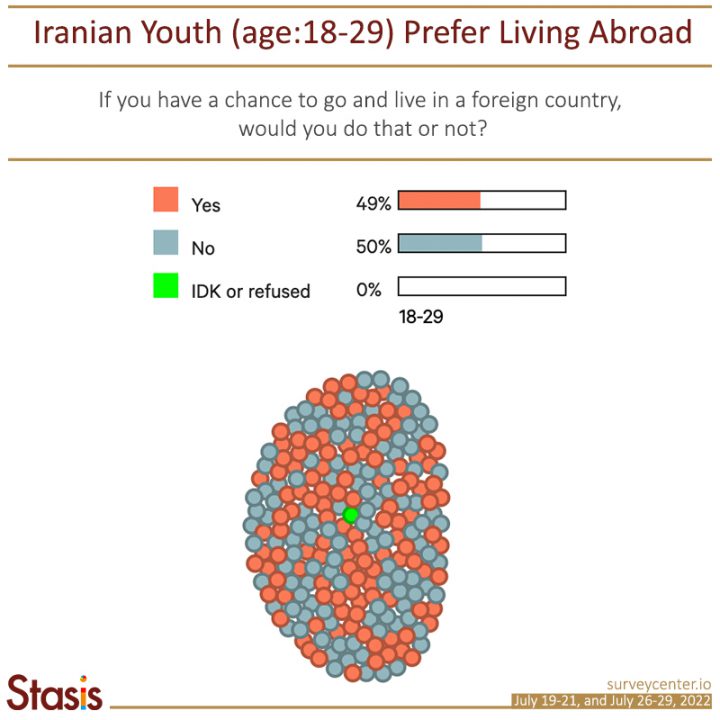
5 in 10 Iranian Youth Want to Leave the Country
Stasis Consulting: A recent study found that most young Iranians are pessimistic about the possibility of prosperity in their lives under the administration of current President Ebrahim Raisi. Moreover, a full third of the total population, including almost half of all Iranians between the ages of 18-29, would like to leave the country if given the chance. This information is based on a poll conducted by Stasis Consulting between July 19-21, 2022, and July 26-29, 2022.
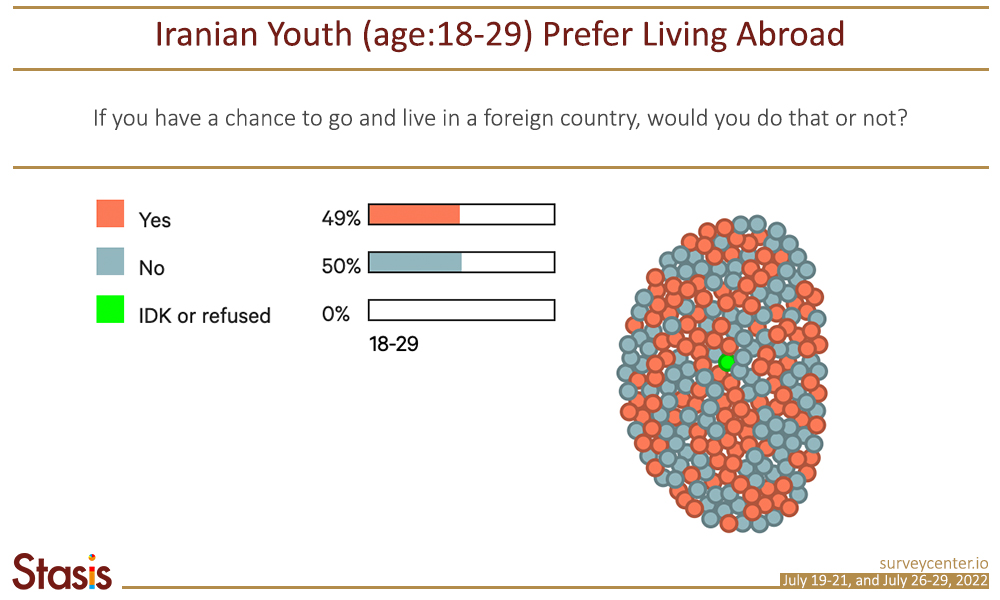
Stasis conducted this study via phone interviews with a random sample of 1,246 Iranian residents between July 19-21, 2022, and July 26-29, 2022. The results of this poll have been interactively visualized in this link. This is an interactive platform detailing the results of every question, distinguished by gender, age group, location, and education in a bar chart.
Iranian Youth Do Not See Prosperity in Their Futures
Respondents of this survey were asked if they agree or disagree with a statement that says: “Iranian youth do not see prosperity in their future.” Seventy-seven percent respond affirmatively to this statement, including sixty-six percent who are in completely agreement and eleven percent who somewhat agree. Just twenty percent hold an opposing view.
Question: To what extent you agree or disagree with this statement: Iranian youth do not see prosperity in their future.
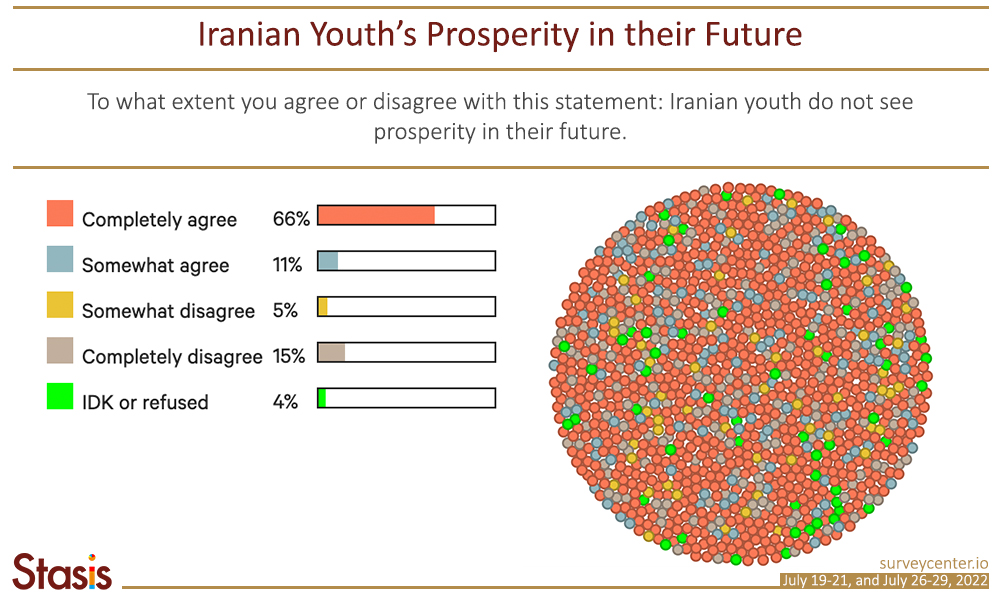
Fifty-three percent of respondents say that government officials restrict the liberties of Iranian youth by interfering in their lifestyle. This number is even worse among young people aged 18 to 29; sixty-four percent believe this statement to be true.
Iranians show no confidence in President Raisi regarding the issues that matter most to young Iranians. Just thirty-five percent believe that solving the issues that matter to Iranian youth is among President Raisi’s main priorities, whereas fifty-five percent hold the opposite view. Among young people aged 18 to 29, sixty-five percent disagree with this statement; only twenty-seven percent completely or somewhat agree. Moreover, the majority of Iranians do not believe that President’s Raisi election will increase economic opportunities for Iranian youth (fifty-nine percent).
Below are the questions that were asked of respondents regarding the issues that matter to Iranian youth and a chart for each question that categorizes the responses in terms of the extent to which respondents agree or disagree with the statements.
Question: For each statement, please say to what extent you agree or disagree, selecting your choice from: completely agree, to an extent agree, to an extent disagree, or completely disagree.
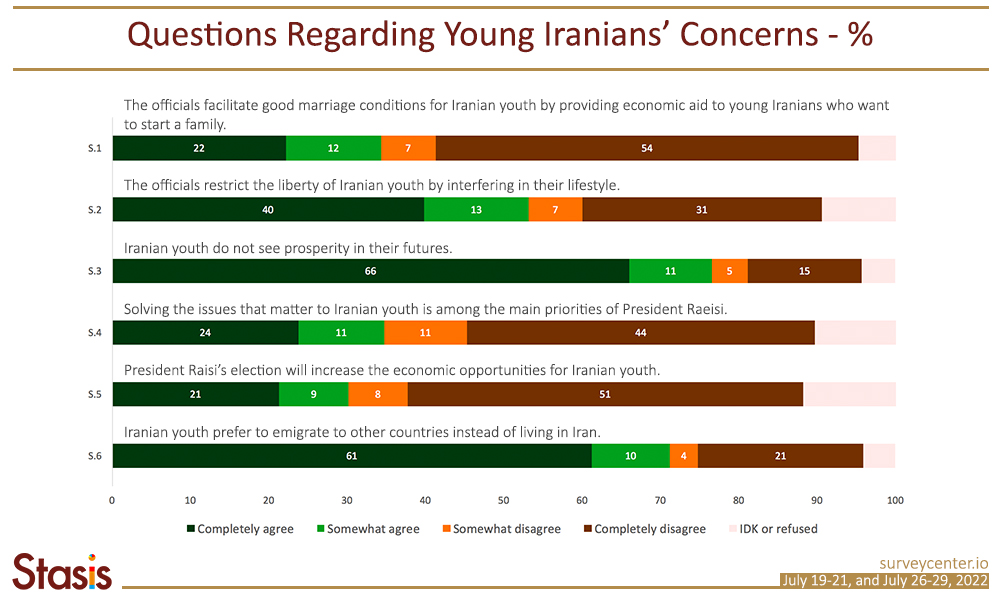
One-third of Iranians seek opportunities to live abroad
Thirty-four percent of Iranians say they would leave the country if given an opportunity to do so.
Question: If you have a chance to go and live in a foreign country, would you do that or not?
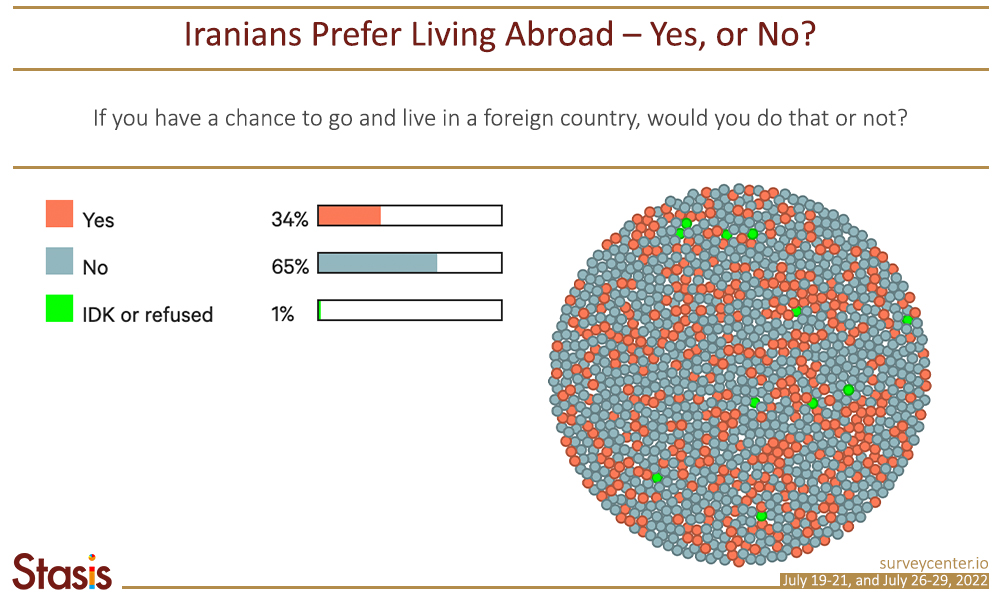
This number is significantly higher among young Iranians (age 18-29). Forty-nine percent of young Iranians would prefer to live abroad.
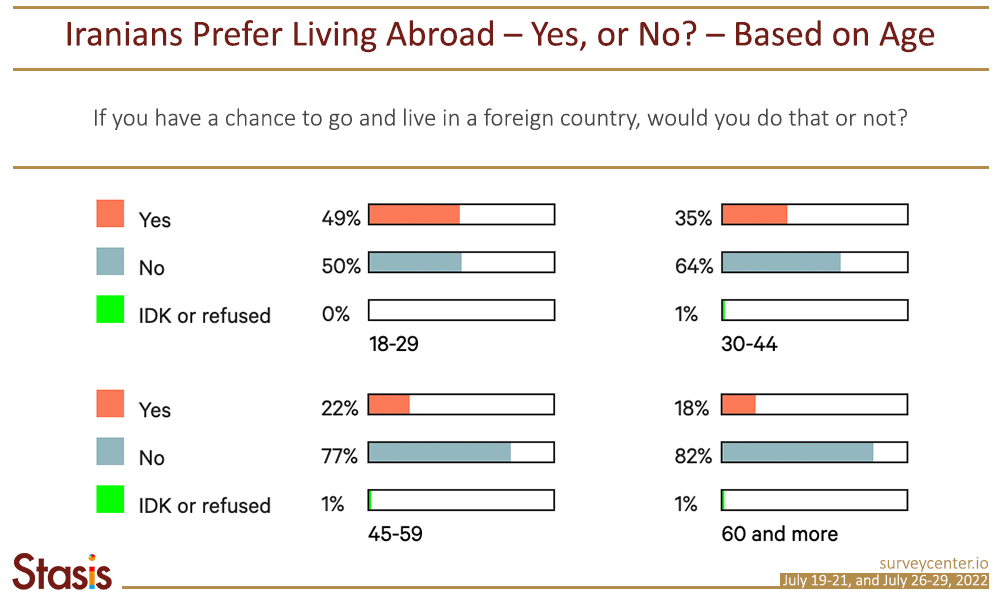
Moreover, those who reside in urban centers and who hold a college degree are more likely to say that they would prefer to leave Iran than Iranians who live in rural communities and who do not hold college degrees. Forty-three percent of Iranians who have a college degree say they would prefer to live a foreign country.
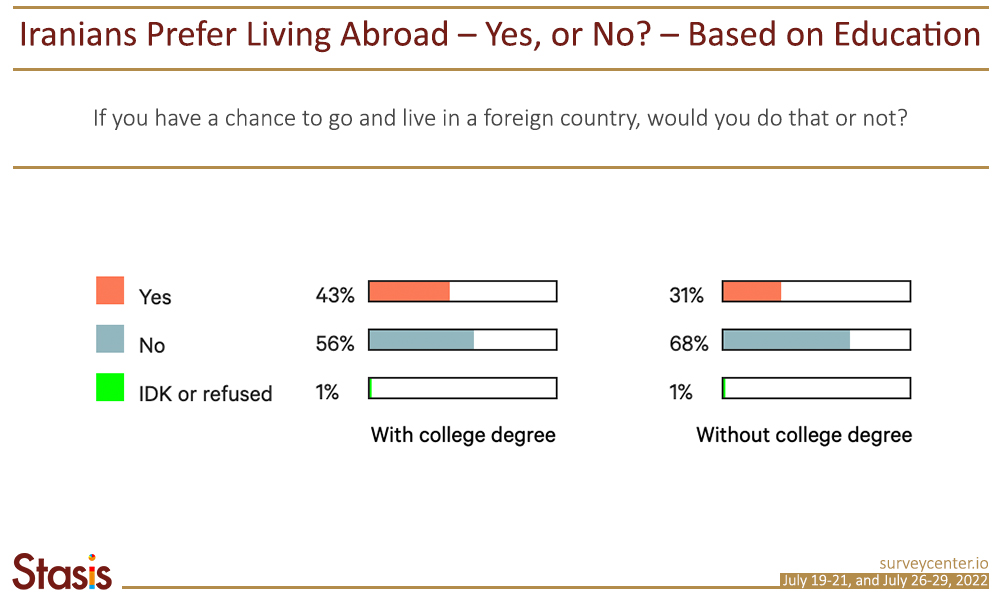
Germany is the first choice of those respondents who would opt to leave Iran if they had an opportunity. Canada and the USA ranked second and third.
Question: Which country would you prefer to live in? – Among those who affirmatively say they would prefer to live abroad.
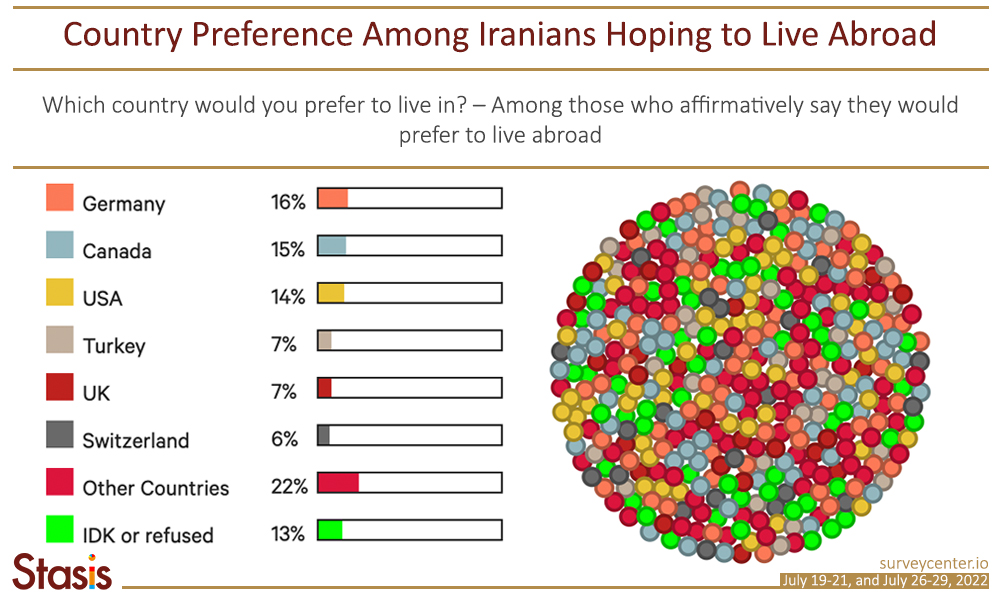
Among the reasons why Iranians have left the country in recent years, the overall state of the economy is the main factor, according to this study. In this multi-response question, the economy was mentioned by fifty-seven percent of respondents, followed by political or religious freedom (twenty-six percent), and hope for a better life (twenty-five percent). Only five percent mentioned looking for higher education is the main reason for Iranians leaving the country.
Question: Many Iranians over the last couple of years have left Iran to live in foreign countries. In your opinion, what are the main reasons those people left the county?
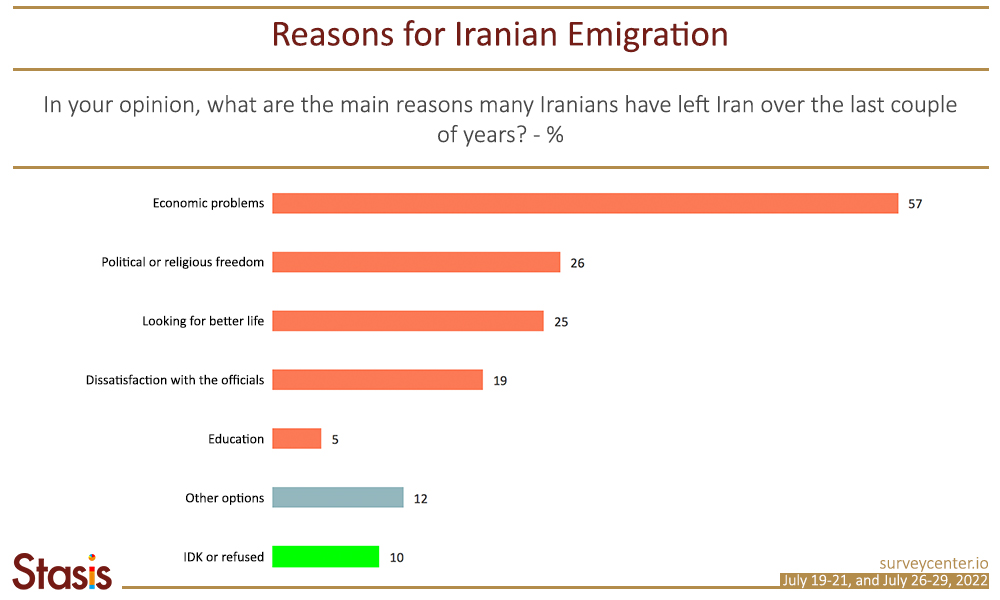
Iranians are against the “Cyberspace Protection Bill”
Most Iranians are against the controversial “Cyberspace Protection Bill” which parliamentary and government officials have sought to pass through the Majlis. Sixty percent of the respondents disagree with this bill, while only twenty-five percent agree.
Question: Do you agree or disagree with the Cyberspace Protection Bill?
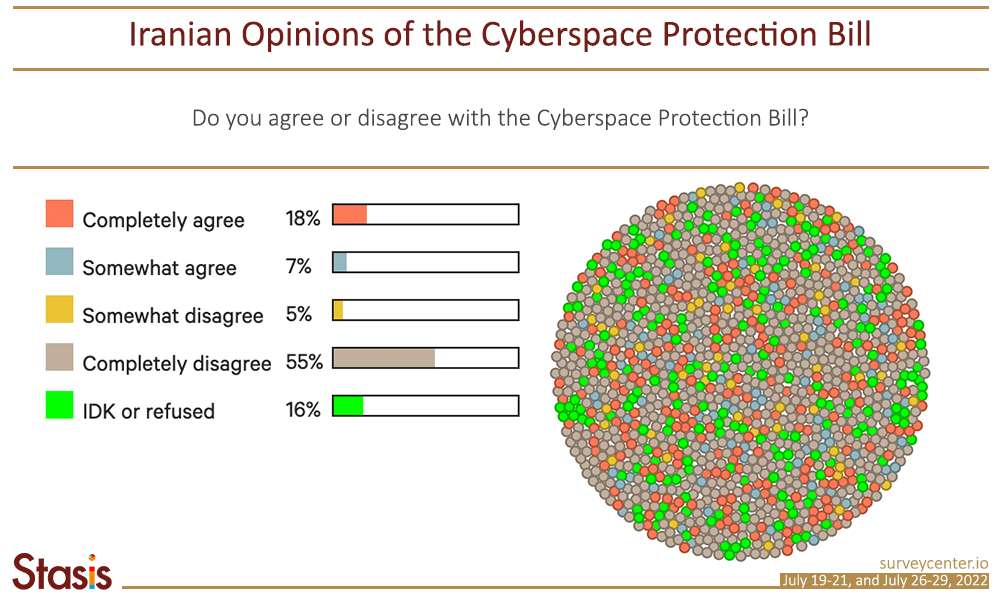
Public officials in the Majlis and the government claim that the primary reason for enacting the Cyberspace Protection Bill is to ensure law-abiding use of the internet. However, the majority of Iranian believe otherwise. Fifty-four percent of Iranians say the main purpose of this bill is to censor cyberspace as opposed to just twenty-one percent who said the main purpose of the bill is to ensure law-abiding use of cyberspace.
Question: Do you believe that the main purpose for enacting the Cyberspace Protection Bill is to ensure law-abiding use of cyberspace or to censor it?
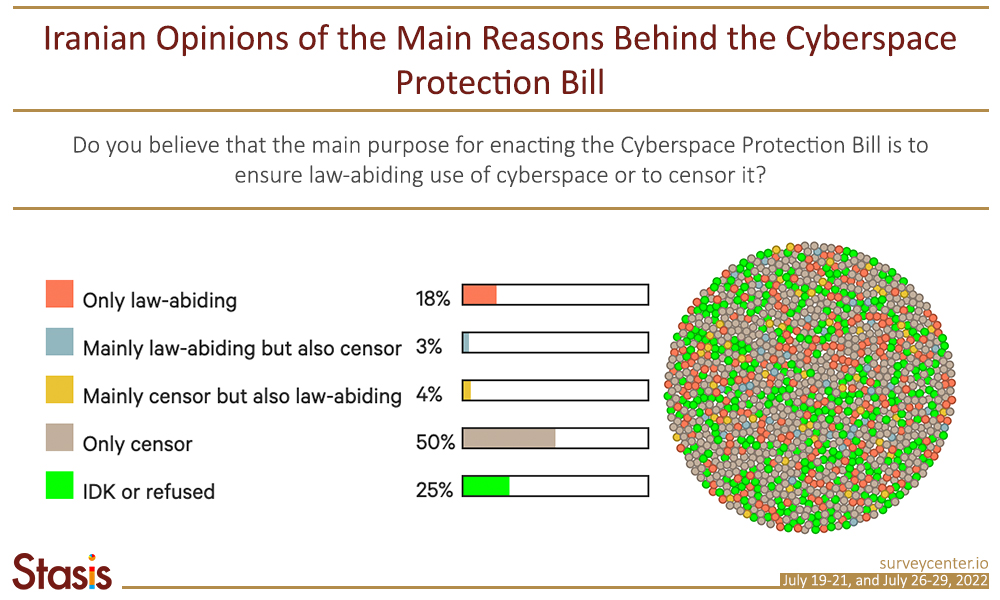
Iranians lean against increasing the national population
Iranians are almost evenly split on the question of increasing the birth rate to raise the national population; fifty percent of Iranians disagree with the idea that there should be an increase to the birth rate, whereas forty-one percent say it is a good idea.
Question: Do you agree or disagree with this idea that we should be working on increasing the national population?
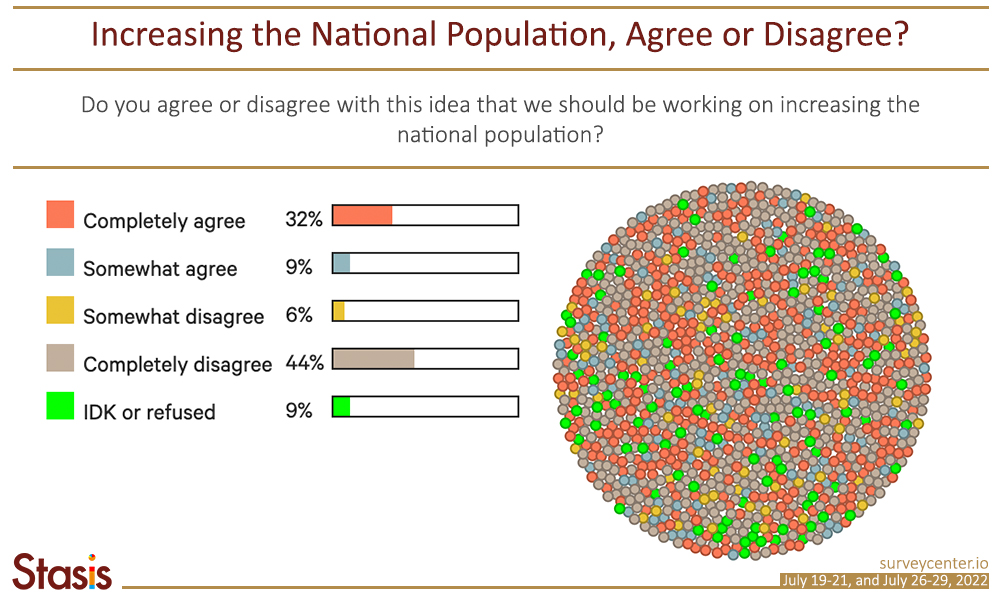
Among the main reason for the country’s currently low birth rate, poor economic conditions rank first. In this multi-response question, sixty-eight percent of respondents report that the economy is to blame for Iran’s low birth rate. The high cost of living and unemployment rates came in as the second and third most common reasons.
Question: In your opinion, what are the main reasons for our country’s currently low birth rate?
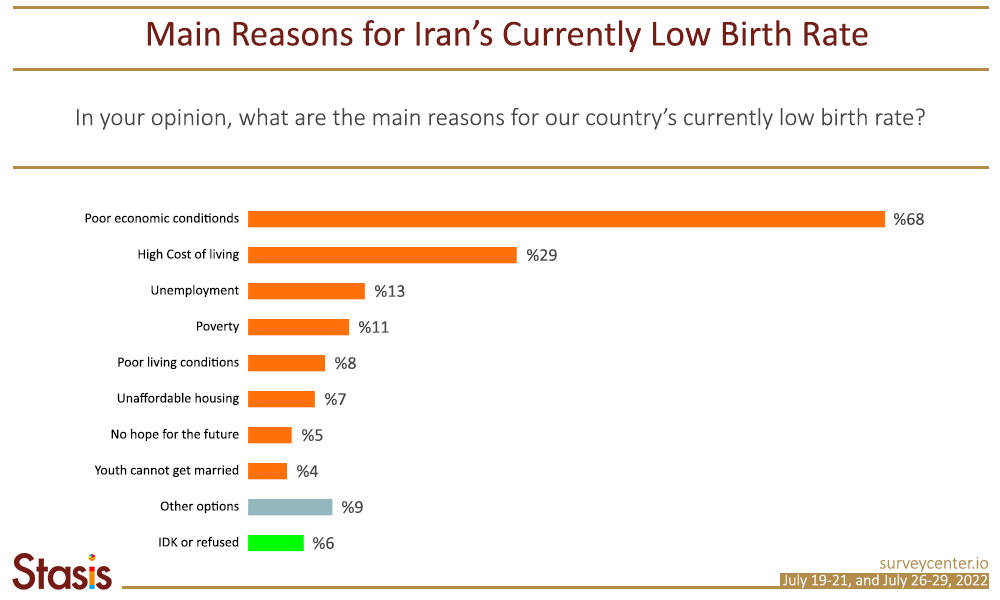
Remarks
The results of this poll have been interactively visualized in this link.
This is an interactive platform detailing the results of every question, distinguished in a bar chart by gender, age group, location, and education.
For each question, there is also a bubble chart (consisting of many small circles), detailing the respondents’ information. Each circle represents a single respondent; clicking on any given circle will generate the complete answer set for that particular respondent. The color coding is consistent between the bubble chart and bar chart for easy comparison.
Methodology
- Telephone interviews were conducted between July 19-21, 2022, and July 26-29, 2022, among 1246 respondents aged 18 and older living in Iran. Native Farsi speakers conducted the interviews during daytime hours.
- The proportional two-stage sample includes respondents from every province. Provinces have been sampled based on their population.
- Results are weighted by gender, age, and location (urban vs. rural areas) based on the Iranian national census of 2016 and 2018 statistical yearbook.
- Based on the sample, there is a 95 percent confidence that the margin of sampling error is within ± 2.7 percentage points.
- Rates of respondent candor and reliability were appraised by experienced interviewers. Forty-two persons found to be lacking in these areas were removed from the sample.